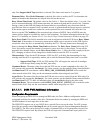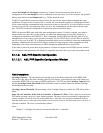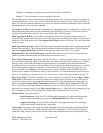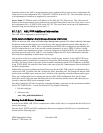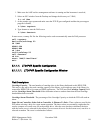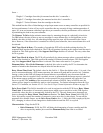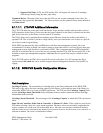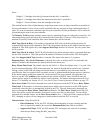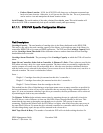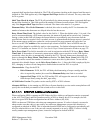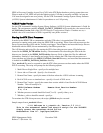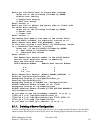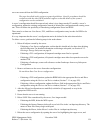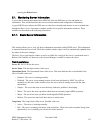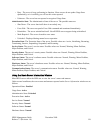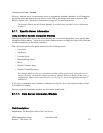• Enforce Home Location. If ON, the SCSI PVR will always try to dismount a mounted cart
back to its home location. Otherwise, it will just use the first free slot. The scsi_home utility
can be used to view and manipulate the home location values.
Serial Number. The serial number of the robot, obtained from device_scan. This serial number will
allow the SCSI PVR to automatically look up all available control paths upon startup.
5.1.1.1. STK PVR Specific Configuration Window
Field Descriptions
Cartridge Capacity. The total number of cartridge slots in the library dedicated to this HPSS PVR.
This may or may not be the total cartridge capacity of the library; a site might use part of the library for
some other HPSS PVR or for some non-HPSS application. The PVR uses the Cartridge Capacity field
and the Cartridge Alarm Threshold field to determine when to send an alarm that the total cartridge
threshold has been exceeded.
Cartridge Alarm Threshold. The percentage of the Cartridge Capacity at which the PVR will send an
alarm.
Same Job on Controller, Other Job on Controller, & Distance To Drive. These values are used by the
PVR when selecting a drive for a tape mount operation. The three values are essentially weights that are
used to compute an overall score for each possible drive. After the score has been calculated, the drive
with the lowest score is selected for the mount. If two or more drives tie for the lowest score, one drive is
selected at random. The score is calculated as follows:
Score =
Weight 1 * Cartridges from this job mounted on this drive’s controller +
Weight 2 * Cartridges from other jobs mounted on this drive’s controller +
Weight 3 * Units of distance from the cartridge to the drive
This method has the effect of distributing a striped tape mount across as many controllers as possible for
the best performance. It also will try to pick controllers that are currently driving a minimum number of
tapes. So, in an environment with many tape drives per controller, the best performance will be achieved
by minimizing the load on any one controller.
The Distance To Drive helps minimize mount times by mounting the tape in a physically close drive.
For STK drives, a unit of distance is from one Silo/LSM (Library Storage Module) to the next. This
means that the tape must go through a pass-through port or elevator. This process is more time
consuming. Therefore the default value for STK robots is a higher value which forces the tape to stay in
the same Silo/LSM even if it means the drive selected is attached to a controller which is heavily used.
All other things being equal, the tape will be mounted in the closest drive.
Shelf Tape Check-In Retry. The number of seconds the PVR will wait before asking the robot if a
HPSS Management Guide November 2009
Release 7.3 (Revision 1.0) 120



